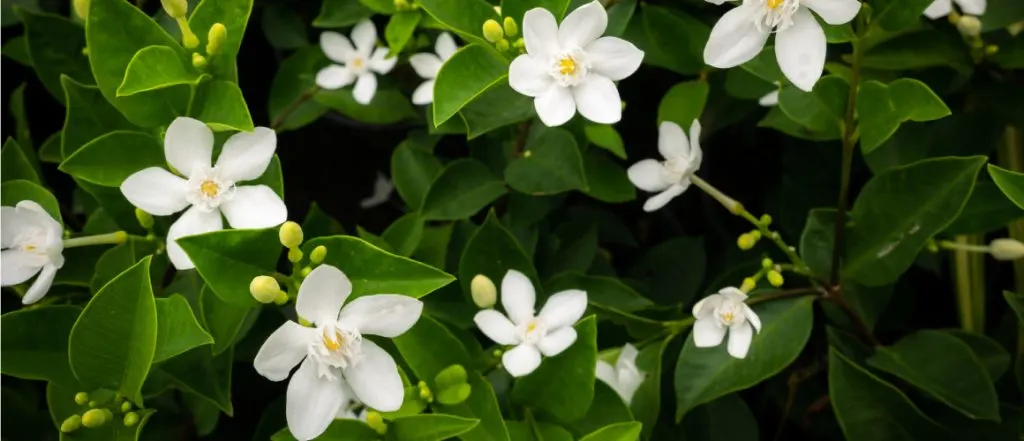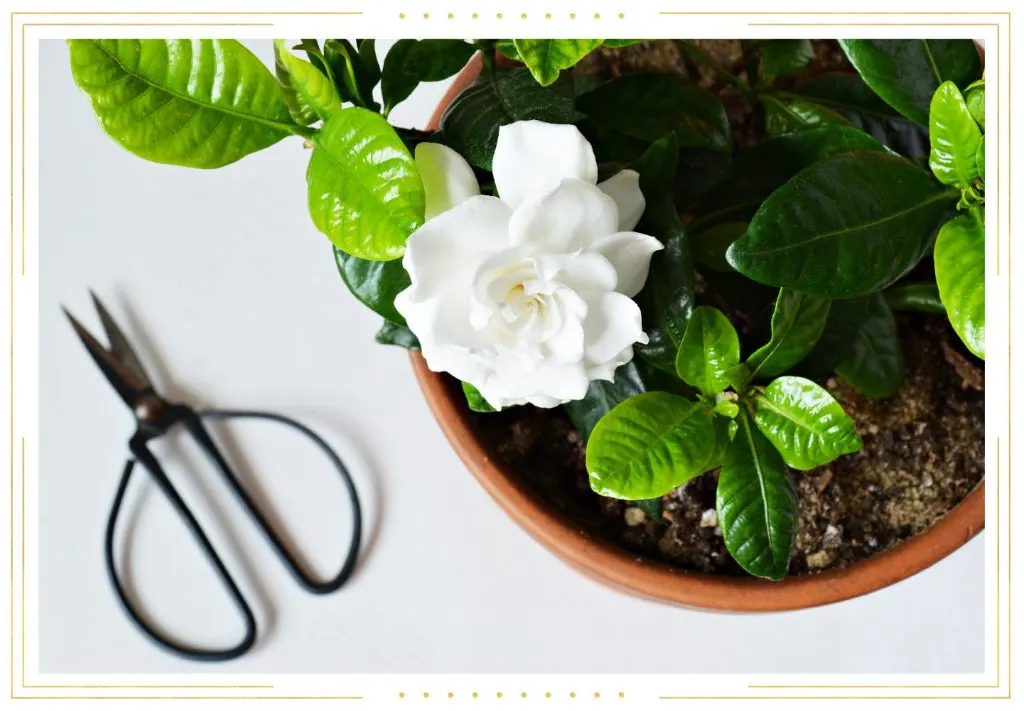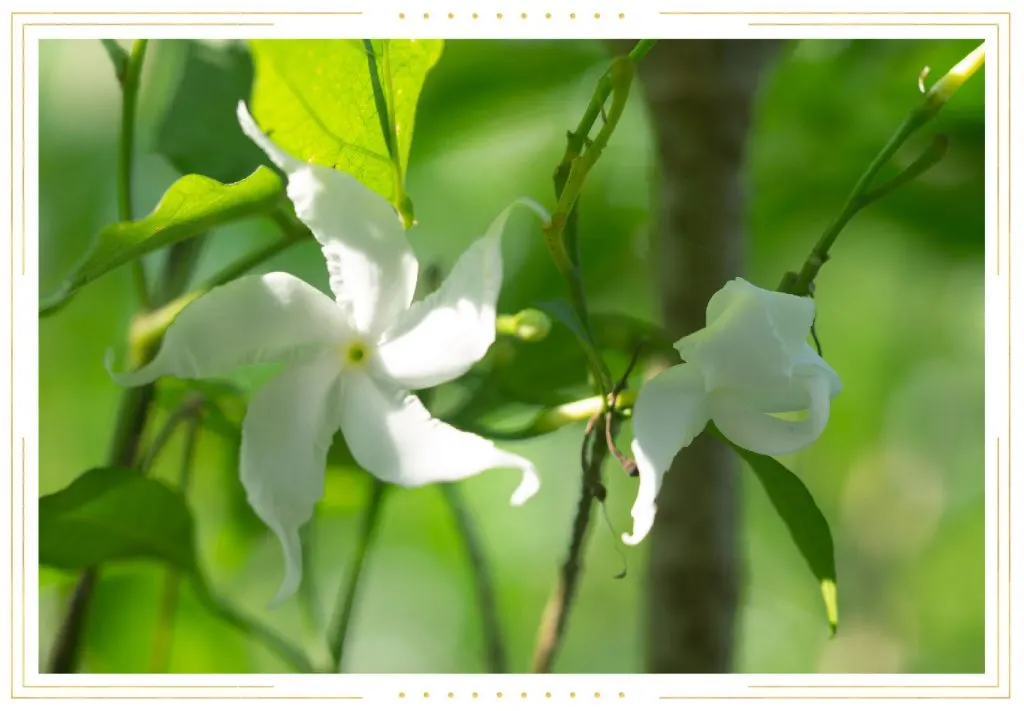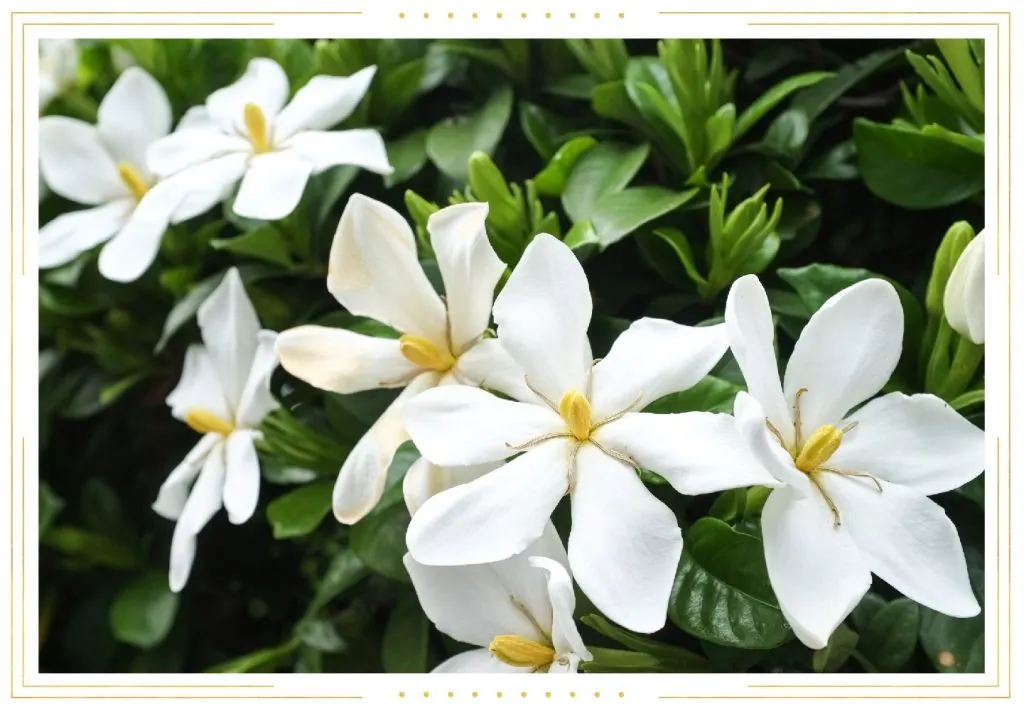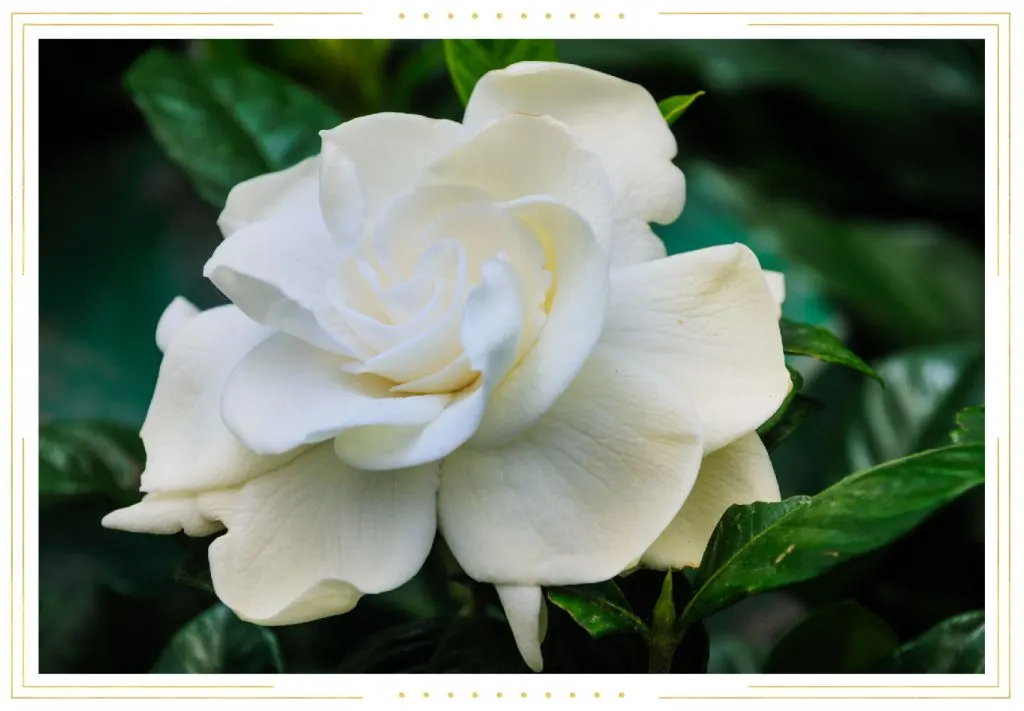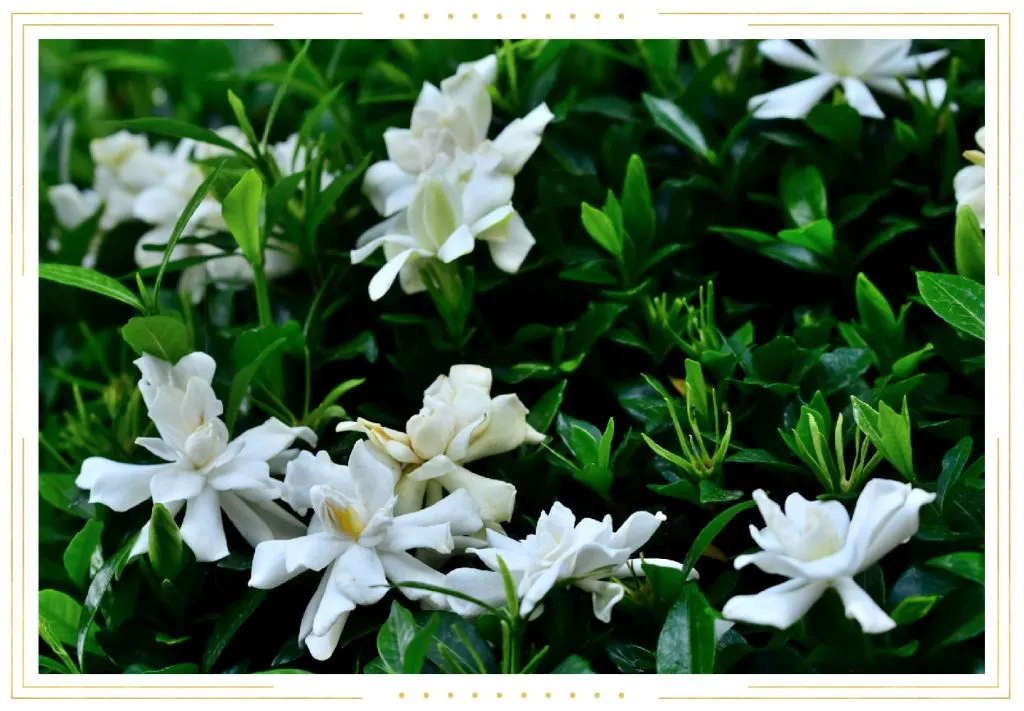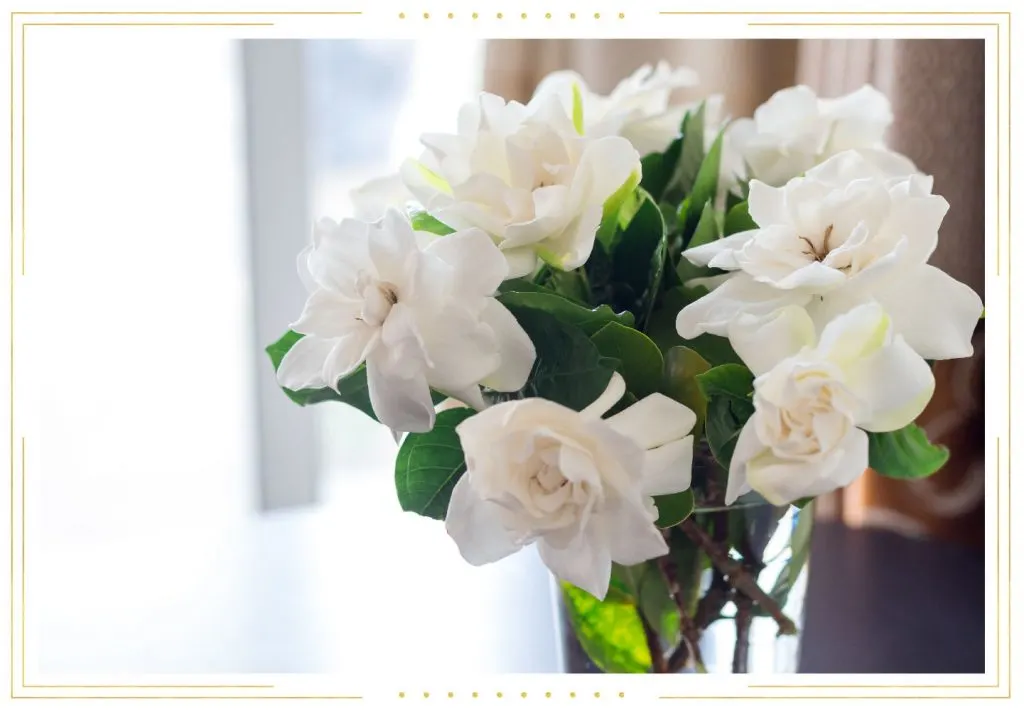August 04, 2021
Gardenia Care Guide: Growing Tips + Info
Gardenia plants have beautiful, fragrant white flowers that are a symbol of trust and clarity, making them a lovely addition to any garden or home. There are plenty of varieties to choose from, so you are sure to find one that appeals to you. With a few simple tips in mind, caring for these unique flowers is a breeze, especially in the summertime!
Below we’ll cover proper gardenia care, including sun, water, temperature and other care needs so you can begin nurturing your plant. We’ve also included different types of gardenias, some frequently asked care questions and a bonus section on gardenia bouquet care.
Gardenia Overview
Gardenia flowers carry a sweet and light aroma that can be recognized immediately by anyone who has ever smelled it before. Known for their glossy green leaves and white flowers, gardenias are popular blooms commonly found in the Southern region of the United States. However, these flowers are native to the tropical and subtropical regions of Asia and Africa.
There are over 142 species of gardenia plants that have been growing in places like China and Japan for thousands of years. They are also common in Polynesia, where people often use the flowers as necklaces due to their highly fragrant scent. Some Polynesian islands even use these flowers to indicate one’s relationship status — when the flower is worn on the right ear, the person is single, and the left ear means they are in a relationship!
The flower was named “gardenia” by John Ellis, who named it after the amateur botanist Alexander Garden in the 18th century. Shortly after the flower was introduced to the United States, gardenias began gaining more popularity, especially in the South.
How To Care for Gardenias
Gardenias are lovely summer flowers that are perfect for those who want a sweetly scented garden in their home. However, they are often considered a difficult plant to take care of and it’s recommended that gardeners start with small plants without buds to allow them to adjust to a new home. Doing so will ensure that the buds will eventually grow into beautiful flowers.
Sunlight
Gardenia plants should be placed in full sun for a few hours during the day, but partial shade is appreciated, especially during the summer months. If your plant receives too much direct sunlight, the buds may fall off or the leaves will scorch, so be careful!
Water
Keeping the soil constantly moist is key to a gardenia’s health. Water the plant thoroughly until water drips through the drainage holes at the bottom of the pot. During the winter months, reduce watering to every couple of weeks.
Temperature
Gardenias thrive in 70 degrees Fahrenheit during the day and about 60 degrees Fahrenheit throughout the night. Since they are considered tropical plants, they perform best in warmer temperatures and can be fussy if conditions aren’t ideal.
Toxicity
Though gardenias are nontoxic to humans, they can be mildly toxic to animals. The flowers, leaves and stems contain geniposide and gardenoside, toxins that cause mild to severe gastrointestinal upset in dogs and cats.
Pests & Problems
Pests: Even when grown under the best conditions, gardenias are still susceptible to a variety of plant pests and insects. To name a few, these flowers attract scales, whiteflies, aphids and spider mites. In cases like this, prune out any infested foliage and spray your plant with water to wash off the pests. If that doesn’t work, you can always opt for chemical controls and insecticides to get the job done.
Problems: Like many other plants, gardenias are prone to root disease, which is usually caused by fungus. To prevent this from happening, be sure your soil is well-drained and provide good air circulation for your plant. Other diseases that are commonly found in gardenias include bud drop, stem canker and powdery mildew.
Repotting & Propagation
Repotting: The easiest way to tell when your plant needs to be repotted is if the roots begin growing from the bottom of the container. To avoid damaging any buds or foliage, wait until late spring to early summer to switch pots. Choose a container that’s approximately 1-to-2 inches larger in diameter and make sure it has drainage holes to allow any excess water to seep through.
Propagation: The best time to propagate gardenias is in early spring with 3- to 4-inch stem cuttings. Remove the lower leaves and keep the cuttings moist by placing them in a perlite soil mixture. Place the plant in bright, indirect light and you’ll begin to see the plant root in about four to eight weeks.
Types of Gardenias
There are over 142 types and varieties of gardenias that range in size, color and texture. While widely known for their fragrant scent and tubular flowers, there are varieties that have different shapes to fit any garden aesthetic. Gardenias tend to thrive in hardiness zones between 8 and 10, but you can still enjoy them in other regions. Below are some of the most popular gardenia flower varieties.
1. Pinwheel
These sweetly scented pinwheel-shaped flowers are a must in any garden! The stark white petals stand out against the glossy green foliage, making it a beautiful sight in any setting. You’ll find the pinwheel gardenia blooming best between late spring and early summer, then sporadically until the fall.
2. August Beauty
August Beauties are known for their large and rounded velvety blooms, perfect for containers or hedges. Due to its stunning shape, this flower is a common choice for corsages and emits a strongly scented fragrance that is sure to get you compliments.
3. Mystery
In order to fully appreciate the distinct scent of the mystery gardenia, choose a planting site that’s near your home (doorway, window, etc.) so you can reap the benefits of this lovely variety. Be sure to plant this flower in well-drained sandy soil in partial sun for optimal health.
4. Buttons
These blooms are smaller in size compared to other varieties but still produce a strong and powerful scent. Buttons are composed of two rows of white petals that surround the golden anthers in the center of the flower. Due to their smaller size, buttons are a great option if you’re looking for a variety that does well in containers.
5. Frostproof
Like the name suggests, these gardenias have flower buds that resist late spring frosts without damage, so if you live in cooler climates these might be a good option for you. Frostproofs are also more tolerant of direct sun exposure than other gardenias.
6. Tahitian Gardenia
This tropical variety is native to Tahiti, where it’s the country’s national flower. There are about five to eight petals on each gardenia flower, all of which are longer and skinnier than other varieties. Since this is a tropical flower, be sure to keep it in temperatures between 68 and 74 degrees Fahrenheit.
7. Crown Jewel
These stunning flowers have more of a cold tolerance than other varieties and are known for their low spreading habit. Crown Jewels bloom twice a year and are great for small gardens or containers, so if you don’t have much space in your home these may be the perfect option for you.
8. Jubilation
Jubilation gardenias are charming rounded shrubs that are a popular choice in the South. With some frost resistance, the glossy leaves can remain dark green throughout the winter with proper care.
Gardenia FAQs
Since gardenias aren’t the easiest plant to take care of, you may be scratching your head wondering where to start. Below are some common questions about gardenia flower care and their life cycle to help you become a gardenia savant!
Do gardenias need sun or shade?
Though gardenias like full sun, they can be sensitive to direct heat, especially in the summer months. On warmer days, provide partial shade to your gardenias — this will ensure the leaves don’t get scorched and the buds will bloom.
How do you keep gardenias blooming?
In order to maximize the number of buds you’re getting from your gardenia plant, you’ll want to make sure the soil is moist and well-drained. Water is essential for flower development, so be sure to water the plant anytime the soil starts to feel dry (every one to two weeks).
Do gardenias like coffee grounds?
Yes! Coffee grounds make for a great homemade gardenia fertilizer since they are rich in potassium, magnesium and nitrogen. Simply collect any leftover coffee grounds from your morning cup of joe and spread them around the base of the plant. The coffee works to lower the pH in the surrounding soil, which is great for the acid-loving gardenia!
Do gardenias do well in pots?
Gardenias are great options if you’re looking for a plant that does well in containers. Keeping your gardenias in a pot will make it easier when you need to move the plant around based on the amount of sun it’s getting, especially during the summertime. Once it’s wintertime, it can be brought indoors to avoid the cold weather.
Gardenia Bouquet Care Tips
Not only do gardenias make a wonderful addition to any garden, but they also make for gorgeous, colorful bouquets in the spring and summer! Below are some tips to ensure you get the most out of your beautiful floral arrangement, whether it’s for an anniversary or home decor.
Trim the Stems
After freshly cutting the gardenia flowers from your garden, get a pair of sharp scissors or a knife and cut off 1 inch from their stems. Be sure to do this at a 45-degree angle, as this allows the plant to absorb more water. Slicing the stem lengthwise about halfway up is also a great way to promote hydration.
Arrange Gardenias in a Vase
Once you trim the stems, place the flowers in a vase shape of your choice filled with lukewarm water and floral preservative. This prolongs the life of the flowers and allows the water to flow in the stems quicker. Don’t forget to trim any leaves or buds that will be submerged underwater as that could shorten the gardenias’ vase life.
Keep Flowers Cool
Before you place the flowers on display for all to admire, you’ll want to keep them in a cool place for one or two hours. The cooler temperatures will allow the flowers to quickly absorb the water and any floral preservatives you use without the harshness of sunlight.
Replace Water
Change the water every three or four days to minimize the amount of bacteria growing in the vase. Remember to recut the stems at an angle every two to three days to ensure the flowers are absorbing enough water.
Add Accents (Optional)
To take your white bouquet game to the next level, add a few accents to create the ultimate floral arrangement. We recommend lavender, thyme or rosemary to complement the sweet scent of the gardenia. Whether you choose to grow August Beauties or Tahitian gardenias, you’ll surely be in for a treat with this gorgeous summer flower. With a few of our tips in your back pocket, you’ll be mastering the basics of gardenia care and will become an expert in no time!

